In the fall of 2021, we decided to take on the project of painting the wood floors on most of the main floors of our home. When researching the web to find helpful information about such an enormous undertaking, I couldn’t find much information anywhere.
Luckily, I could find enough information to jump in, and my Sherwin-Williams store helped me pick the right product.
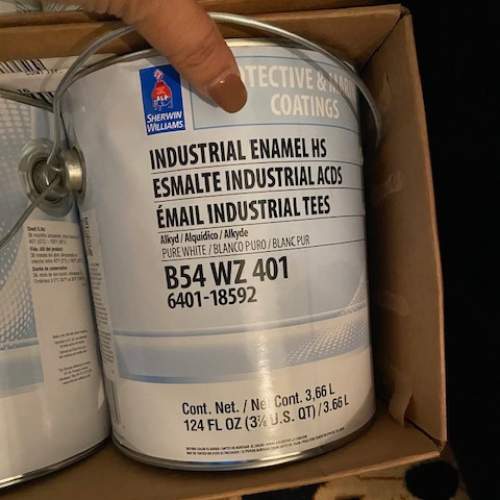
I have written posts about why you should and shouldn’t paint your floors here and here, so check those out before you start. Since I made all the mistakes, I figured I would help the next person. Here are a few things to remember/consider before painting your wood floors.
1. Oil-based Paint is Very Stinky
My Sherwin store and a professional painter (who painted the wood floors of a local designer) recommended using Sherwin Williams’ oil-based paint, which is their oil-based industrial enamel.
People don’t know much about oil-based paints anymore because they are kind of out of fashion. Everything these days is water-based and has low VOC.
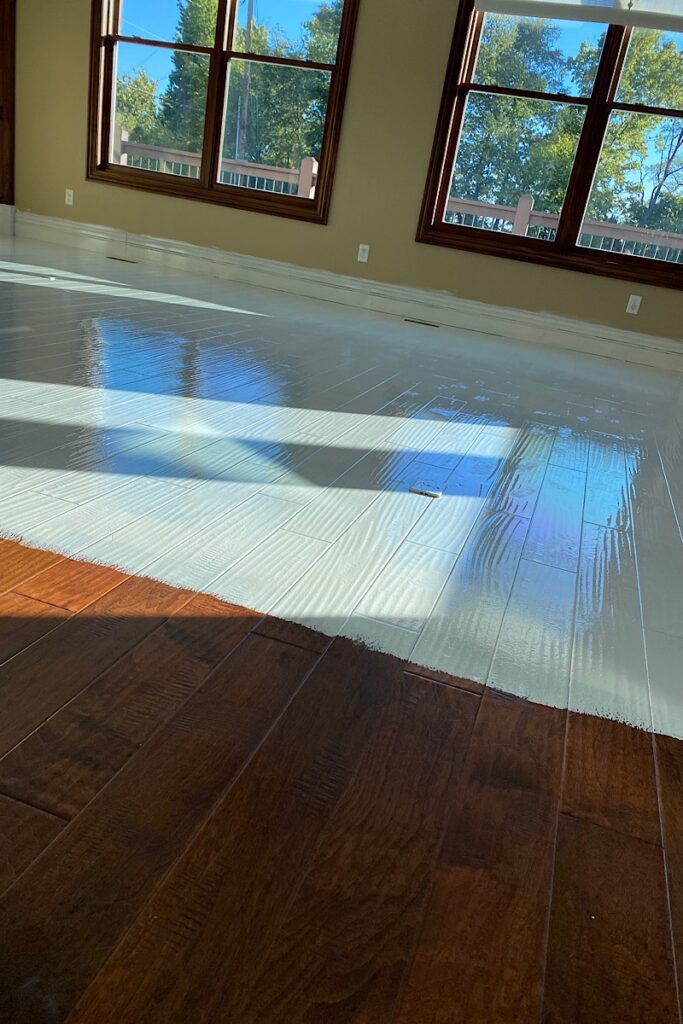
Well, this paint is not. It’s a solvent-based, high-VOC paint. The smell is overwhelming and very strong the first two days when the paint is drying. It lingers for a solid week, and you may smell it longer if you are sensitive to smells.
People with small children and pets – this project may require you to move out of the home for a few days. We had to! I will explain why in a bit.
2. Oil Based Paint Takes A LONG Time to Dry
In the day and age of quick-drying, water-based paints, oil paint that takes 16- 24 hours to dry is an unknown phenomenon. Yes, oil-based paints are slow drying, and there is no way around it.
Warm or hot weather helps speed things up quite a bit, but that’s really about it.
If you are painting in the hot months, you might be able to paint two thin coats in 24 hours, but be careful. Don’t get carried away; 24 hours is safe and more practical.
In the past, I have used additives to help (artist’s oil paint) dry faster. I don’t recommend it for floor painting, though. It can destabilize the paint and can interfere with adhesion.
3. Paint Your Floors When The Weather is Warm
As I said above, warm air helps with drying time. I chose to paint my wood floors in October, which is less than the ideal time (in the Midwest) to take on this project.
As you can see, our floors didn’t cure as expected, so my husband had to climb on the kitchen counter to put away the groceries and get his pizza for dinner.
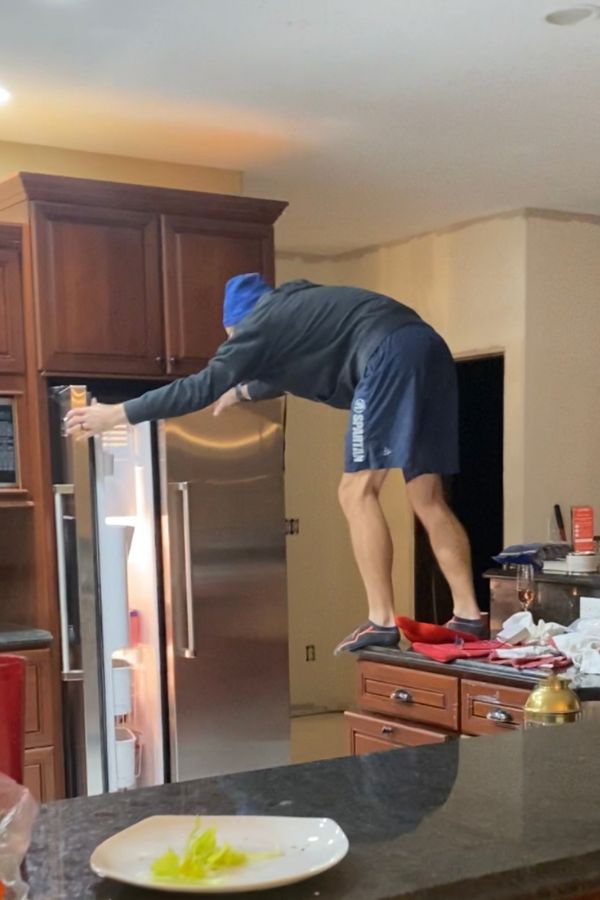
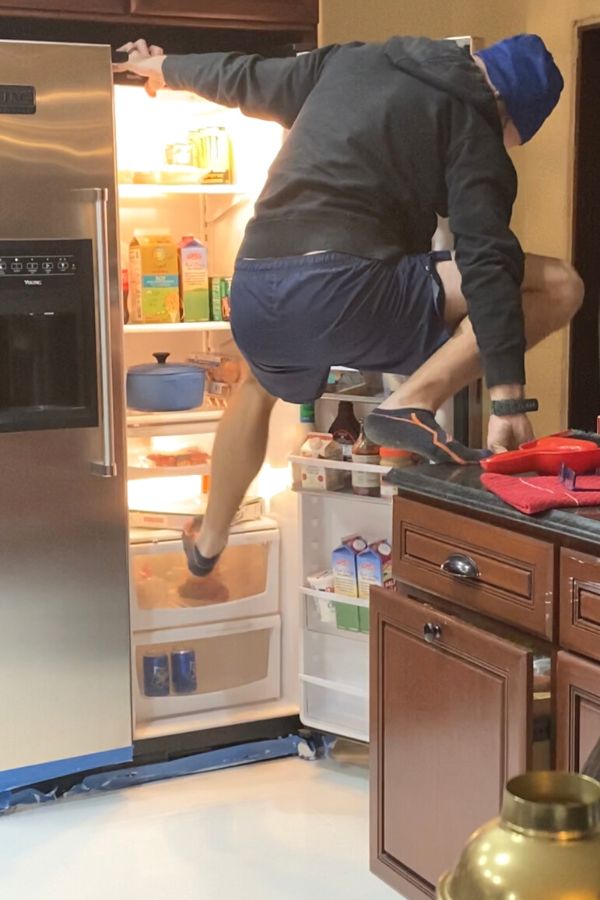
Late spring or full-on summer is the best time to paint your floors.
You will be able to re-coat them quicker, it will cure faster, and you can get back to living your life quicker.
Two things –
1) Warm weather is super helpful to help dry the paint faster, significantly faster. Paint loves the heat. The solvent escapes much quicker when it’s warmer.
2) In the summer, you can leave the windows wide open for good ventilation, which is easier on your lungs, and moving air helps to move the smell out.
4. Screens On Your Windows
Speaking of leaving the windows open, make sure your windows have screens. This may sound like, “Duh!” This wasn’t the case for us.
Our home has water views (of the Mississippi River); as a result, there are no screens on almost all of the windows in our home.
The previous owners either ditched them or never ordered any screens. Not sure. So, leaving windows open wasn’t an option for us. Warm weather = bugs. Without the screens being in place, the risk of bugs flying inside and landing on wet paint was too high.
If you don’t have screens on your windows, or if they are missing, painting while it’s hot outside is your only option.
We painted our wood floors with the windows slightly cracked, which was less than ideal, but we had no choice.
LJSXFI Half Face Respirator Mask with Goggles
5. Wear Protective Gear When Painting
Speaking of open windows. I don’t think the open windows alone will rapidly move all the stinky air out. Wear a well-fitting protective mask. Your lungs will thank you. Ensure you have the correct cartridge for your mask meant to be used with solvent-based paint. Our painter uses this one, and it’s a good one.
6. Don’t Paint Floors on an Exceptionally Windy Day
This might sound unimportant, but trust me; you don’t want the fine dust settling on your freshly painted, tacky floors. Air movement is essential, but a windy day is definitely not a good day to paint floors.
7. Dry Time and Cure Time
Like I said earlier, super thin coats can be rolled 12 hours apart. That may mean that you are painting day and night, literally. To be safe, I would recommend waiting 24 solid hours to dry. After 24 hours, you can gently walk on them.
Repeat the process till you get solid, even coverage. This may take three coats or so, depending on how dark your existing floors are. After the 3rd coat, it takes about 48 hours for them to be dry for light usage and 3-4 days for everyday use.
The paint is still soft and uncured after 3-4 days, so be mindful when moving furniture, etc. You can’t drag heavy furniture on painted floors, ever, pretty much, but you have to be extra careful with even the light stuff for about a week.
After about a week, you are safe, and the floors are ready for daily use. Again, this will significantly vary depending on the ambient temperature.
8. Open Floor Plan Problems
Painting the wood floors of an open floor plan presents a unique challenge. All connected areas should be painted at once. That’s a major downfall of having an open floor plan when painting floors. You can’t chop up connected, open areas. This is something that I didn’t think through, and it ended up being a problem.
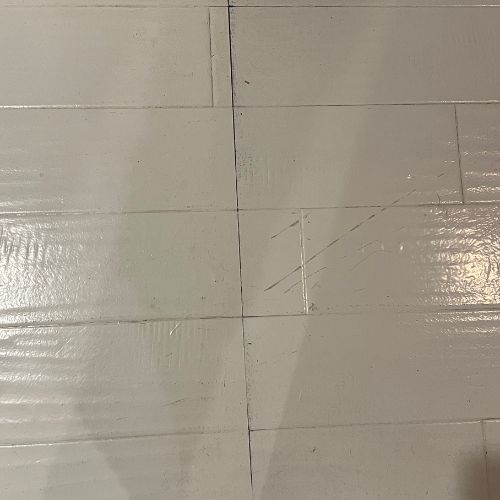
There is no way to stop at an artificial stopping point without getting visible “seam” lines. We tried to break up the entryway from the rest of the house, but the visible line was so apparent and ugly that we had to paint over the last coat all at once to blend everything.
9. You May Have to Move Out
For all the reasons mentioned above, this may not be a project where you can live in the house while working on it.
First of all, you have to exit the area you are painting, or you will get into a situation where you will have to step on wet paint to get out. Not good.
Our bedroom is on the 2nd floor, and we only painted the main floor, but the paint stench was so unbearable that we couldn’t sleep upstairs. We had to take an impromptu trip out of town to escape the smell.
10. Oil-based Enamel Yellows As It Cures
The base of most oil-based paint is linseed oil, which is brown/yellow in color. The paint will cure with a natural warm tint. No amount of titanium dioxide pigment can prevent it from turning to its natural color. If you are looking for cool, crisp, bright white floors, this may not be the best option.
I chose Benjamin Moore’s White Dove paint for my floors and a distinctly warm white color. I love it! Some people think it’s too warm, and I can see what they mean.
That said, white colors with a little blue or black in them, like Decorator’s White or Chantilly Lace, can create an illusion of bright white and give you more of a neutral white end result.
Let’s Recap
Painting your wood floors is quite a distinct kind of project. Even though technically it’s “just painting” and requires no special skills, it’s a project that involves stinky, slow-drying paint, so it requires a bit of planning, especially if you have kids.

